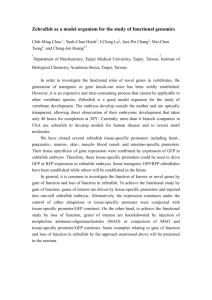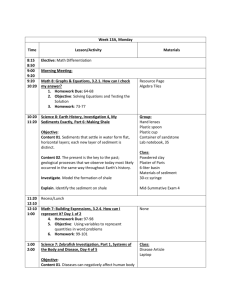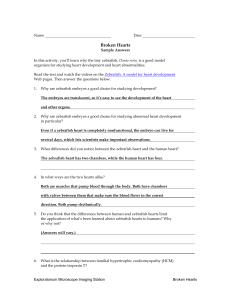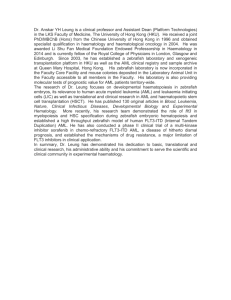Joe, I just found your email in my spam folder. Sorry about the delay
advertisement
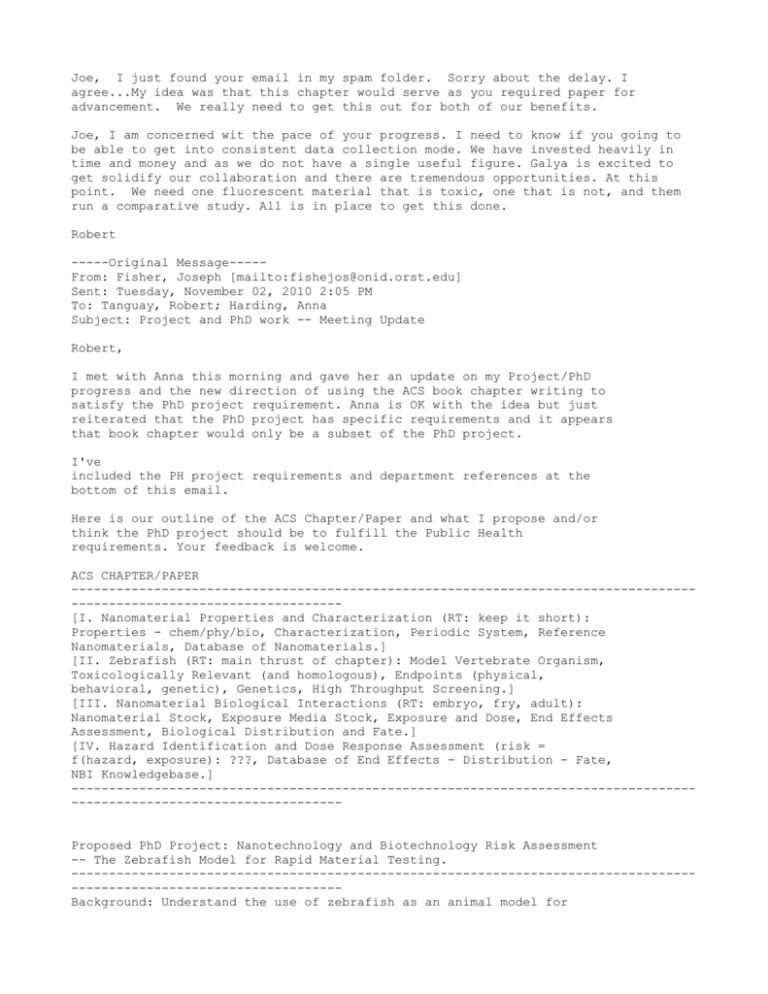
Joe, I just found your email in my spam folder. Sorry about the delay. I agree...My idea was that this chapter would serve as you required paper for advancement. We really need to get this out for both of our benefits. Joe, I am concerned wit the pace of your progress. I need to know if you going to be able to get into consistent data collection mode. We have invested heavily in time and money and as we do not have a single useful figure. Galya is excited to get solidify our collaboration and there are tremendous opportunities. At this point. We need one fluorescent material that is toxic, one that is not, and them run a comparative study. All is in place to get this done. Robert -----Original Message----From: Fisher, Joseph [mailto:fishejos@onid.orst.edu] Sent: Tuesday, November 02, 2010 2:05 PM To: Tanguay, Robert; Harding, Anna Subject: Project and PhD work -- Meeting Update Robert, I met with Anna this morning and gave her an update on my Project/PhD progress and the new direction of using the ACS book chapter writing to satisfy the PhD project requirement. Anna is OK with the idea but just reiterated that the PhD project has specific requirements and it appears that book chapter would only be a subset of the PhD project. I've included the PH project requirements and department references at the bottom of this email. Here is our outline of the ACS Chapter/Paper and what I propose and/or think the PhD project should be to fulfill the Public Health requirements. Your feedback is welcome. ACS CHAPTER/PAPER ---------------------------------------------------------------------------------------------------------------------[I. Nanomaterial Properties and Characterization (RT: keep it short): Properties - chem/phy/bio, Characterization, Periodic System, Reference Nanomaterials, Database of Nanomaterials.] [II. Zebrafish (RT: main thrust of chapter): Model Vertebrate Organism, Toxicologically Relevant (and homologous), Endpoints (physical, behavioral, genetic), Genetics, High Throughput Screening.] [III. Nanomaterial Biological Interactions (RT: embryo, fry, adult): Nanomaterial Stock, Exposure Media Stock, Exposure and Dose, End Effects Assessment, Biological Distribution and Fate.] [IV. Hazard Identification and Dose Response Assessment (risk = f(hazard, exposure): ???, Database of End Effects - Distribution - Fate, NBI Knowledgebase.] ---------------------------------------------------------------------------------------------------------------------Proposed PhD Project: Nanotechnology and Biotechnology Risk Assessment -- The Zebrafish Model for Rapid Material Testing. ---------------------------------------------------------------------------------------------------------------------Background: Understand the use of zebrafish as an animal model for nano-bio interactions and high throughput screening. Problem: There is little data/information on risk with nano-bio interactions. Specific Aims 1 (Lit Review): Review literature and report on zebrafish as a model vertebrate organism. RQ 1A: Are zebrafish a toxicologically relevant platform for investigating nano-bio interactions? RQ 1B: What endpoints (physical, behavioral, genetic) have been or could be utilized in analyzing zebrafish? RQ 1C: What added value do high throughput screens provide? Specific Aim 2 (Data Analysis): Test nano-bio interactions (dose/response) and fate versus biological effect (mortality, morbidity, behavior) with zebrafish. RQ 2A: Do nano-bio interactions (dose/response) correlate with fate and biological effect? RQ 2B: Can nanomaterial fate be detected in zebrafish using high spatial and temporal imaging? Specific Aim 3 (Risk Assessment): Use results from the literature review and data analysis to add to the data/information on risk with nano-bio interactions. RQ 3A: How can these results of nano-bio interactions be incorporated into data and knowledge-bases in order to improve hazard identification and dose response assessment? RQ 3B: What ontology and/or parameters are needed in zebrafish experiments and nano-bio informatics systems to answer important nanomaterial health and safety questions? Methods: (Lit Review) -- Literature databases, peer reviewed and gray literature. (Data Analysis) -- Zebrafish embryos (0 to 5 dpf), 96 well dose/response experiments, human/machine assays, statistical analysis, imaging. (Risk Assessment) -- Database, transforming data to information, agent (nanomaterial properties) and effect data (molecular, cellular, organ, organism). ---------------------------------------------------------------------------------------------------------------------DISSERTATION PROPOSAL COMPONENTS 1. Nanomaterials -- Occupational Health and Safety aspects and a Research Laboratory Health and Safety Guidance. (prior plan for PhD project) 2. Nanotechnology and Biotechnology Risk Assessment -- The Zebrafish Model for Rapid Material Testing. (proposed plan for PhD project) 3. TBD (Could incorporate nanomaterial work with military, nano-bio informatics with Tanguay/Harper, HT informatics with Tanguay, or PNNL nano-bio imaging with Tanguay/Orr). PH PROJECT REQUIREMENTS Project Proposal. Students will write a project proposal between 10-20 pages (double-spaced) and obtain approval to proceed with the project from their major professor and their second committee member. The project proposal must contain the following: background/literature review, specific aims/hypotheses/ research questions, and brief description of methods, including human subjects/ IRB protocol. Project Report. The project write-up must include the following components: background, literature review, specific aims/hypotheses/research questions, methods (qualitative or quantitative), results and conclusion. The suggested length of the project write-up is 25 double-spaced pages, however, page lengths may be further determined by the student's Project Committee. Students are highly encouraged to submit their near-to-final draft of their report to peer review with fellow graduate students with respect to obtaining feedback on the writing of the project report. Specific information about this activity will be available from the major professor. REFERENCES http://www.hhs.oregonstate.edu/ph/environment-safety-health http://www.hhs.oregonstate.edu/ph/sites/default/files/2010-2011-PhD-Handbook.pdf -Joe Fisher Corvallis, OR 97331 831-915-9404 (cell) Email: fishejos@onid.orst.edu Tanguay Lab -- Environmental& Molecular Toxicology




